2nd Qtr
Sabbath School Lesson 2025
666, Amazing Love of God, Bible Study for Beginners, End of the World, End of Time, End Times, Faith and Forgiveness, Faith That Heals Relationships, How to Love the Unlovable, Last Days, Mark of the Beast, Sabbath School for Adults, SDA Sabbath School, Spiritual Growth Videos, Spiritual Lessons on Love, YouTube Sabbath School
Dr. Brenda Davis PhD
0 Comments
Allusions, Images, Symbols: How to Study Bible Prophecy (Lesson 12) Precursors/Forerunners
🌿WORLD CRISIS AHEAD? HOW TO AVOID THE MARK OF THE BEAST 666
As we navigate the difficulties of life, one pressing question comes up: “How can we stay true to our faith when faced with the irresistible challenge to survive?” The answer is simple yet profound: we are not alone, and we have supernatural guidance to help us navigate through it. 💖
Welcome back to episode 12 of our 13-part series on understanding the past, to help us live in the present and prepare us for the future using the Bible as our guide. We are nearing the end of our journey.
Stay with us, because the trip you are about to take can change your attitude about life and the world we are living in.
The bible provides the keys needed to understand what it really means to live.
In this series, we have explored bible stories, symbols, and signs to help us know and understand how to live now to prepare for eternity.
If you are just getting onboard, review the previous lessons at SabbathSchoolDaily.com
God has given us stories in the Bible as a roadmap to help us effectively maneuver during the closing days of Earth’s history.
These stories, symbols, and signs are the foundational keys to unlocking the special messages and warnings God has for our day.
They can bring about change in our lives now and prepare us for the future.
God almighty, as we look around and see the daily news it becomes evident that we are near the end of earth’s history. We want to live eternally with you in the New Heaven and New Earth. Prepare our hearts and minds to meet you when you return. In Jesus Name, Amen
Allusions, Images, Symbols: How to Study Bible Prophecy
(Lesson 12)
Precursors/Forerunners
Part 1 Introduction
Hard times are coming—but fear doesn’t have to be part of our story. 💪 When you know Who walks with you, even the darkest time your path lights up with hope.
God hasn’t left us guessing. He’s given us stories, real-life examples, and promises that help us stand strong—no matter what lies ahead.
This lesson will give you courage for today… and hope for tomorrow. Just as 2 Timothy 1:7 says:
“For God has not given us a spirit of fear, but of power and of love and of a sound mind” (2 Timothy 1:7).
This powerful verse reassures us that fear is not from God. Instead, He empowers us with strength, compassion, and clarity, allowing us to face life’s uncertainties with confidence and courage.
This becomes even more evident in two extraordinary Bible stories that illuminate the path ahead and inspire us, especially as we anticipate the final days of earth history.
First, we will explore the courageous story of Shadrach, Meshach, and Abednego, who stood unwavering against a difficult king.
These brave men chose to honor God over a golden idol, demonstrating incredible faith in the face of danger.
This story is a shining example that resonates with the trials ahead as described in Revelation 13.
When they confronted threat of their life, these young men leaned into their faith, showing us that we can do the same.
Next, we turn to the New Testament, where early Christians encountered challenging obstacles.
Their experiences serve as a guiding light among the struggles we may face as we await Christ’s return.
These narratives remind us that, although our faith may be tested and tried we can find strength in unity and draw comfort from the words of Jesus.
Both examples exemplify notable bravery and offer insights into achieving peace of mind even in the most challenging situations.
Time and time again, Jesus offers us comfort with phrases like, “Do not fear,” and “Why do your thoughts trouble you?” It’s clear that we need not let worry consume us.
Instead, we can immerse ourselves in His promises. He lovingly said, “ ‘Let not your heart be troubled,’ ” and added, “ ‘you believe in God, believe also in Me’ ” (John 14:1, NKJV).
This call to trust in Him provides us with peace and assurance, even when we face the unknown.
It’s vital to remember that while challenges will arise—especially for those who strive to stand firm in their faith, trails are not reasons to surrender to fear.
Rather, they are opportunities for growth and for us to let our light shine.
In a world filled with pressures and temptations, we can remain steadfast in our devotion and avoid the allure of worshiping the beast.
By focusing on God’s unwavering love and guidance, we can choose hope instead of fear, courage instead of despair, and faith instead of doubt.
One of the most popular prophecies in all the Scripture is found in Daniel 2.
Read Daniel 2:31–45, what was Nebuchadnezzar’s dream, and how did Daniel interpret it. Why is his dream significant to our day and how does it give you hope. Share your thoughts. Then continue to Part 2: Understanding Daniel 2
Allusions, Images, Symbols: How to Study Bible Prophecy
(Lesson 12)
Precursors/Forerunners
Part 2: Understanding Daniel 2
Have you ever felt that deep, unshakeable urge within you, a profound call to cling to hope amid the storms of life?
We explore a powerful prophecy, that could ignite your spirit and reaffirm your faith as you anticipate Christ’s return.
One of the most compelling prophecies in Scripture is Daniel 2.
More than five hundred years before Christ’s arrival, the prophet Daniel, wrote this book.
From the interpretation of King Nebuchadnezzar’s, the King of Babylon’s dream Daniel foretells about the future of this earth’s history. Starting with his time in the Kingdom of Babylon he talks about the rise and fall of great empires. He talks about the kingdoms that would control the earth after Babylon, Media-Persia, Greece, Rome—and how Rome would fragment into the many nations we know as modern Europe.
This however isn’t just history; it is a revelation of God’s guiding hand at work through time.
Let’s reflect on the meaning of this profound insight. Daniel declared in Daniel 2:43, “’they will mingle with the seed of men; but they will not adhere to one another, just as iron does not mix with clay’” (Daniel 2:43).
These events unfolded precisely as Daniel predicted. This truth rings loudly today. No matter how intertwined people become, nations often fall into division. It’s a painful reality we witness time and again.
European leaders married daughters of neighboring leaders to unite their nations, but divisions among their people continued, they remain divided.
Consider the British monarchy as a prime example. They are known as the House of Windsor today, a nice English name, but that name changes came only about in 1917.
Previously, they were identified by a name revealing their distinctly German lineage. This is because many of the British royalty were related by blood to the Germans due to intermarriage.
🏰 But, despite their family ties, deep-seated conflicts led them to change their name during World War I.
This illustrates how conflict can sever bonds that should unite. Now, imagine being in the presence of King Nebuchadnezzar.
This sets the stage for Daniel 2:31-45, where Nebuchadnezzar’s dream unveils a huge statue made from various metal, symbolizing the rise of powerful kingdoms, ultimately followed by a divine stone that demolishes all before it.
The prophecies in Daniel build on the foundation of Daniel 2, showing the sequence of world empires leading to God’s eternal kingdom.
Daniel 2:44 powerfully declares, “And in the days of these kings the God of heaven will set up a kingdom which shall never be destroyed.”
Let that promise sink in—it’s a beacon of hope in our world! Yes, the prophecies show a continuous narrative through history, seamlessly connecting the past, present, and future—all paving the way for God’s divine plan to save his people and recreate a new heaven and a new earth.
Couple with this is the grand vision presented in Daniel 7:13-14,
13 “I was watching in the night visions, And behold, One like the Son of Man, Coming with the clouds of heaven! He came to the Ancient of Days, And they brought Him near before Him.
14 Then to Him was given dominion and glory and a kingdom, That all peoples, nations, and languages should serve Him. His dominion is an everlasting dominion, Which shall not pass away, And His kingdom the one Which shall not be destroyed. (Daniel 7:13-14)
This verse reassures us that, despite the tumult and uncertainty we may face, God holds the future firmly in His hands and is ultimately in control.
In other words, the prophecies go through history in an unbroken line of empires, starting in the past and ending in the future, even to our day.
This is what is called the historicist approach to interpreting prophecy. This approach is particularly relevant for understanding last-day events as depicted in the book of Revelation. (Poueouroe)
As we live each day let us be anchored in the unwavering truth not only does God know the future He is, ultimately, in control of it. Daniel 2 confirms it!✨
The book Prophets and Kings says it best:
In the annals of human history, the growth of nations, the rise and fall of empires, appear as if dependent on the will and skill of man; the shaping of events seems, to a great degree, to be determined by his power, ambition, or whim.
But in the word of God the curtain is drawn aside, and we behold, above, behind, and through all the play and counterplay of human interest and power and passions, the agencies of the All-merciful One, silently, patiently working out the counsels of His own will.—Prophets and Kings, pp. 499, 500.
Man is determined to control the affairs of this earth. Just look at what King Nebuchadnezzar did after Daniel interpreted his dream. Read Daniel 3:1-12. How is what he did like that of Satan? Share your thoughts.
Then, View the next segment of this video, Part 3: Worshipping the Image
Allusions, Images, Symbols: How to Study Prophecy
(Lesson 12)
Precursors/Forerunners
Part 3: Worshipping the Image
What would you do when standing for God could cost you your life? 🔥 Would you choose to bow or would you choose to burn? Between now and Christ’s return, the pressure to compromise will only grow stronger. But the story you’re about to hear shows us what it really means to stand firm—no matter the cost.
At first, filled with loyalty King Nebuchadnezzar was impressed by what Daniel done. In fact, After Daniel told him his dream—down to the tiniest detail—the king was shaken. He bowed to Daniel, honored his God, and made Daniel ruler over the whole province of Babylon. It looked like the king had finally accepted the true God of Israel.
Looking at Daniel 2:46–48 however we see that for a moment, the king was moved by God’s power. But emotions fade fast when pride is still alive. His worship was short-lived. 🙁👑
Time passed, and the king made a bold, arrogant move.
Notice what happens in Daniel 3:1–12
He built a massive statue—entirely of gold. Nebuchadnezzar’s message was loud and clear: Babylon will never fall, and he will always be king. Anyone disagreeing would be put to death.
This shows what a drive for power and control can become. If in our own lives, we are not careful we can fall into the same condition. A hunger for power and control can blind us to the truth about how the great controversy between good and evil will play out. God has not changed his plan. What He says, He will happen.
Nebuchadnezzar used worship as a weapon. He demanded loyalty, not just to his kingdom—but to himself.
Why not just the head, like in the dream? Because this wasn’t just a statue. This was an outright rebellion. Sounds familiar?
What he did was more than an issue of pride. It was about worship. He set up a counterfeit system of worship.
What he did was a preview of what Revelation warns us about: a time when a false system of worship will be setup and be enforced with the threat of death. 🏛️🔥
That statue of gold wasn’t just about glory—it was a direct challenge to God’s message. It shouted, “I don’t care what God said. I’ll rewrite the ending.”
In a sense, Nebuchadnezzar parades the same characteristics as Lucifer: he was ambitious, arrogant, and prideful. He was so self-absorbed that he had the nerve to rebel openly against God’s authority.
Just like Lucifer who once said, Isaiah 14:14 “I will be like the Most High.” And in this moment, Nebuchadnezzar exhibited that same spirit. 😔
But there was a difference. Nebuchadnezzar, however, unlike Lucifer, eventually came to his senses, He came to know the truth. He developed a faith and learned to trust in God rather in his own power, strength, intelligence, wisdom and might. God was working on his heart. And it is likely see him in the very kingdom he once tried so hard to resist. 🙌🏽👑
And then came the three young men—Shadrach, Meshach, and Abed-Nego—who would not bow. Not even when facing a fire so hot it could kill on contact. Their words were bold… full of faith… but also full of peace.
Daniel 3:17–18
17 If that is the case, our God whom we serve is able to deliver us from the burning fiery furnace, and He will deliver us from your hand, O king.
18 But if not, let it be known to you, O king, that we do not serve your gods, nor will we worship the gold image which you have set up.” (Daniel 3:17–18)
That’s real faith. Not faith because of the outcome—but faith regardless of the outcome. 🙏🏽🔥 They knew God could save them—but even if He didn’t, they wouldn’t bow.
Now think about it. They could’ve easily rationalized to help them get out of this dangerous situation.
Could our refusal be an act of fanaticism? Could our willingness to face death for refusing to obey be going to the extreme?
Why not just fake it? “Let’s just bow and pretend we’re tying our shoes when in reality we are praying to our God”
God knows our hearts. Why not pray to Him while we’re kneeling?
Is this worth the battle? “Is it worth dying over such a small matter?”
But they didn’t. They stood tall. Because even small compromises open the door to big failures when it involves our faith in God.
And Jesus warns us about this kind of thinking in Luke 16:10
“He who is faithful in what is least is faithful also in much; and he who is unjust in what is least is unjust also in much.” (Luke 16:10)
So, Faithfulness starts with the little things. If we cut corners in small moments, we won’t stand when it really counts. The line between loyalty and compromise starts way before the final test.
We are already living in a world that’s asking us to bow—to popularity, to pressure, to comfort, to fear.
But between now and Christ’s return, the test will grow stronger. Will we stand like those three young men… or will we settle for a fake system of worship?
The same God who stood with them in the fire… will stand with you too.💛🔥
The Lord did not forget His own. As His witnesses were cast into the furnace, the Saviour revealed Himself to them in person, and together they walked in the midst of the fire. In the presence of the Lord of heat and cold, the flames lost their power to consume. (“The Life of Daniel and Illustration of True Sanctification,” Advent Review and Sabbath Herald, February 1, 1881, par. 21.)
There is a connection between Daniel 3 and what Revelation teaches about last-day events. What is that connection?
Read Revelation 13:11–17; Revelation 14:9, 11, 12; Revelation 16:2; Revelation 19:20; and Revelation 20:4. See if you can determine the connection. Then Continue to the next segment of this video, Part 4: Worshipping the Image, Again
Allusions, Images, Symbols: How to Study Bible Prophecy
(Lesson 12)
Precursors/Forerunners
Part 4: Worshipping the Image Again
Students of the Bible have noticed it over and over again. There is striking connection between what happened in Daniel 3 and what the book of Revelation warns us is coming in the final days of Earth’s history.
And it’s no coincidence. What King Nebuchadnezzar did—when he made a golden image and when he said, “Bow or burn”—it wasn’t just about Babylon. It was a preview… a shadow… of something much bigger. 🕰️🔥
Back then, we see in Daniel 3:15 the command was simple: Worship the image—or die.
15 Now if you are ready at the time you hear the sound of the horn, flute, harp, lyre, and psaltery, in symphony with all kinds of music, and you fall down and worship the image which I have made, good! But if you do not worship, you shall be cast immediately into the midst of a burning fiery furnace. And who is the god who will deliver you from my hands?”
📝 This wasn’t just about music and ceremony—it was about who had the final say over their lives: the king… or God.
Now fast forward to the end of time. Revelation paints a chilling picture of the beast and his image—another false system of worship. This time, it’s not just on the plain of Dura. It’s worldwide. 🌐
📖 Revelation 13:15
15 He was granted power to give breath to the image of the beast, that the image of the beast should both speak and cause as many as would not worship the image of the beast to be killed. (Revelation 13:15)
📝 It’s the same test, dressed in new clothes. The demand is still this: worship another image or be put to death 💀
This warning is clearly written across the pages of Revelation:
Revelation 13:11–17 describes a battle
It says in Revelation 13:16-17
16 He causes all, both small and great, rich and poor, free and slave, to receive a mark on their right hand or on their foreheads, 17 and that no one may buy or sell except one who has the mark or the name of the beast, or the number of his name. (Revelation 3:16-17)
The battle isn’t just physical, it’s spiritual. Worship is about allegiance. And the enemy will use force, fear, and deception to win hearts that don’t belong to him. 🧠💔
But there’s a faithful group… just like the Hebrew boys… who refuse to bow. They hold tight to God’s commandments, even when the whole world turns against them.
📖 Revelation 14:9, 11, 12 says
9 Then a third angel followed them, saying with a loud voice, “If anyone worships the beast and his image, and receives his mark on his forehead or on his hand,
11 And the smoke of their torment ascends forever and ever; and they have no rest day or night, who worship the beast and his image, and whoever receives the mark of his name.” 12 Here is the patience of the saints; here are those who keep the commandments of God and the faith of Jesus. (Revelation 14:9, 11-12)
📝 The contrast couldn’t be clearer. On the one side are those who worship the false system. On the other side is God’s true system of worship. Worship that flows from love and obedience to God’s commands. 🙌🏽
The battle between Creator and counterfeit becomes even more personal as we move deeper into Revelation.
📖 Revelation 16:2
“So the first went and poured out his bowl upon the earth, and a foul and loathsome sore came upon the men who had the mark of the beast and those who worshiped his image.” (Revelation 16:2)
Revelation 19:20
20 Then the beast was captured, and with him the false prophet who worked signs in his presence, by which he deceived those who received the mark of the beast and those who worshiped his image. These two were cast alive into the lake of fire burning with brimstone. (Revelation 19:20)
Revelation 20:4
4 And I saw thrones, and they sat on them, and judgment was committed to them. Then I saw the souls of those who had been beheaded for their witness to Jesus and for the word of God, who had not worshiped the beast or his image, and had not received his mark on their foreheads or on their hands. And they lived and reigned with Christ for a thousand years. (Revelation 20:4)
The point here is that those who stand for God—even to the point of death—will reign with Christ. The battle may cost everything, but the reward is eternal. 👑
So what’s at the heart of this conflict? It’s not just about bowing to a statue. It’s about worshiping the wrong one. It’s about where your heart is. Who has your loyalty? Your time? Your obedience?
Just like on the plain of Dura, with the three Hebrew boys facing a similar threat, God’s people are called to worship Him, the Creator—not a man-made system, but “ ‘Him who made heaven and earth, the sea and springs of water.’ ”
Even though the circumstance on the plain of Dura are different, both the command to worship an image instead of the Creator is the same as what will happen in the future worldwide. It will be a call to worship the image of the Beast instead of the Creator God—the principle in Daniel is the same as the principle in Revelation.
Read Romans 1:18–25 notice the Link between Romans 1:18 and Revelation 14:9, 10
Romans 1:18
18 For the wrath of God is revealed from heaven against all ungodliness and unrighteousness of men, who suppress the truth in unrighteousness, (Romans 1:18 )
Revelation 14:9-10
9 Then a third angel followed them, saying with a loud voice, “If anyone worships the beast and his image, and receives his mark on his forehead or on his hand, 10 he himself shall also drink of the wine of the wrath of God, which is poured out full strength into the cup of His indignation. He shall be tormented with fire and brimstone in the presence of the holy angels and in the presence of the Lamb. (Revelation 14:9-10)
📝 It’s the same old story—people choosing the creation over the Creator. That’s what idolatry is. That’s what the beast system demands. But God says, “Come back to Me.” 💔⛓️➡️🕊️
Worship doesn’t always mean getting on your knees or burning incense—though it can. Worship means giving your heart, loyalty, and trust to someone or something above everything else.
When you stop and think about who God is—He made us, and through Jesus, He saved us—then it’s clear: God alone deserves our worship. Anything else is idolatry. Perhaps this helps explain Jesus’ strong words in
Matthew 12:30
“He who is not with Me is against Me, and he who does not gather with Me scatters abroad.” (Matthew 12:30 )
There’s no middle ground. You’re either standing with Jesus—or standing in the way. 🧭
You don’t have to wait until the mark of the beast is enforced to choose your side. You’re choosing it right now—with every prayer, every Sabbath, every act of loyalty to the One who made you. 🙏🏽💓
Between now and Christ’s return, the enemy will try everything to get your worship. But only One is worthy. The One who made heaven and earth… the one who gave His life to redeem yours. ✝️🌍
Don’t follow the beast.
Don’t settle for worshipping the image.
Worship the Creator.
He’s the only One who will never lead you astray. ❤️🔥👑
The time is coming in which we must decide who we will worship. God or the image of the Beast. Read Acts 12:1–17 it helps us see what we can potentially have to deal with as we face the last days.
Then, continue to the next segment of this video, Part 5: Early Church Persecution
Allusions, Images, Symbols: How to Study Bible Prophecy
(Lesson 12)
Precursors/Forerunners
Part 5: Early Church Persecution
What if following Jesus meant prison or even death? Would you still remain faithful? As the world rushes toward its final crisis, the early church offers us a glimpse of what real faith looks like under fire. Here we get a preview of what’s coming… and a reminder of the peace we can have in the middle of the storm. 🕊️🔥
It’s not just the Old Testament that prepares us for the events in earth’s history. The New Testament does so too. 📖⚔️
Life was anything but easy for the early Christians.
They weren’t welcomed with open arms. In fact, they were hated—by their own people, who saw them as a threat to the Laws of Moses and their own man-made traditions.
And if that wasn’t enough, they also faced the full wrath of the pagan Roman Empire. 💂🏽♂️🔥
In the Great Controversy, Ellen White describes the pressure they were under saying:
“The powers of earth and hell arrayed themselves against Christ in the person of His followers. Paganism foresaw that should the gospel triumph, her temples and altars would be swept away; therefore she summoned her forces to destroy Christianity. The fires of persecution were kindled.”—Ellen G. White, The Great Controversy, p. 39.
The early church stood in the fire… and in doing so, gave us a glimpse of what’s coming again based on the scenario found in Revelation 13.
There’s one story that brings this to life with chilling clarity: It is the story of Peter in Acts 12.
📖 Acts 12:1–17
📝 James was dead. Peter was next. There was a death penalty against Christians. The government had declared open war on all Christians.
What is interesting is that Peter, on death row, the night before his likely execution is sleeping on what was supposed to be the worst night of his life.
He was not just dozing. He was sleeping so soundly that the angel had to strike him to wake him up. 😴🔔
That kind of peace doesn’t come from pretending everything’s fine. It comes from resting in the One who holds the future. 🙏🏽
Peter is miraculously set free.
Here is what one writer says about Peter’s release:
The prison doors were securely fastened, and a strong guard was placed before them. All chance of rescue or escape by human means was thus cut off. But man’s extremity is God’s opportunity. (“The Deliverance of Peter,” Advent Review and Sabbath Herald, April 27, 1911, par. 10–12.)
So Peter is set free and makes his way to a meeting of believers. When he arrives, they have trouble believing that he had really been freed, even though they had been praying. The Bible says they were _astonished. In other words, they had prayed but they apparently didn’t expect an answer like this one. 😲
Maybe that’s us sometimes, too. This makes you stop and think—how many times do we pray but deep down don’t really believe that God will answer?
We pray for deliverance—but deep down, we wonder if God will really come through. Guilty!
God can. And He does. But not always in the same way we expect. 🕊️
Some believers were delivered. Others were killed. Just like it will be in the last days, as we approach the end.
And Peter? Even though he escaped that night, Jesus had already told him—he would still die for his faith in
John 21:18–19
18 Most assuredly, I say to you, when you were younger, you girded yourself and walked where you wished; but when you are old, you will stretch out your hands, and another will gird you and carry you where you do not wish.” 19 This He spoke, signifying by what death he would glorify God. And when He had spoken this, He said to him, “Follow Me.” (John 21:18–19)
📝 Jesus told Peter the cost of being his disciple and still told him “Follow Me.” Real discipleship isn’t about safety. It’s about trust. 💔🛐
Between now and Christ’s return, the night will grow darker. Laws will be changed. Pressure will rise. Some of us will be spared. Some of us may not. But the call is the same for every believer:
Follow Me. 🕊️
We must let nothing—not even death—stop you from following the Lamb and cause us to worship the beast and its false system of worship.
How does this false system of worship identify itself in the end. The clue is found in what cause the religious leaders in Jesus’ day want to kill him. Read Matthew 12:9–14 and John 5:1–16. See what you discover. Then, continue to the last segment of this video, Part 6: The Mark of the Beast
Allusions, Images, Symbols: How to Study Bible Prophecy
(Lesson 12)
Precursors/Forerunners
Part 6: The Mark of the Beast
Some say, “It’s been too long. The years have passed the death decree and the enforcement of the mark of the beast—have till not happened. The Sabbath issue can’t possibly be a part the end-time crisis.”
Some have expressed doubt, even skepticism, about the interpretation of final events, including how Sabbath and Sunday could be central to the final conflict.
But what if the waiting isn’t a delay… but a test? What if the choice between God’s day and man’s day still matters more than we think?
As time has passed—and as the predicted events like the mark of the beast and the death decree haven’t happened yet—some have started to question. 🤔 They say, “Are we sure the Sabbath will even matter in the end? Why would the world fight over something like Saturday versus Sunday?”
But the Bible is clear. Revelation doesn’t leave us guessing. In the final conflict, it’s about worship. Either we worship the Creator… or the beast and its image. There’s no middle ground. 🧎🏽♂️⚖️
And what has God given us from the very beginning as a sign that He is our Creator?
Genesis 2:1–3
1 Thus the heavens and the earth were completed, and all their hosts. 2 By the seventh day God completed His work which He had done, and He rested on the seventh day from all His work which He had done. 3 Then God blessed the seventh day and sanctified it, because in it He rested from all His work which God had created and made. (Genesis 2:1–3)
📝Before sin, before nations, before churches—there was the Sabbath. It was God’s signature on all creation. A weekly reminder that we are His, and He alone is worthy of our worship. 🌿🕊️
So it’s no surprise that when Revelation speaks of worship, the seventh-day Sabbath is at the center of the conflict.
Now think about it: the same power that Revelation calls the beast is also the one that claims to have changed God’s law—moving the day of worship from Sabbath to Sunday, a change that is found nowhere in the Bible. 😮📜
So when Revelation calls us to worship the Creator, it gives us the exact language found in the Sabbath commandment:
📖 Revelation 14:6–7
6 And I saw another angel flying in midheaven, having an eternal gospel to preach to those who live on the earth, and to every nation and tribe and tongue and people; 7 and he said with a loud voice, “Fear God, and give Him glory, because the hour of His judgment has come; worship Him who made the heaven and the earth and sea and springs of waters.” (Revelation 14:6–7) (Paueorere)
📝 This is a direct reference to the fourth commandment. This isn’t about a day—it’s about allegiance. It’s about who gets our obedience: God or man. 📅🛐
And this conflict isn’t new.
In the New Testament, we see an early example of the struggle between keeping the seventh-day Sabbath and following man-made laws.
Look at Jesus and his encounters with their religious leaders. The religious leaders didn’t just reject Him because of what He said—they wanted Him dead because of what He did… on the Sabbath.
Read Matthew 12:9–14, John 5:1-16
In Matthew 12, Jesus healed a man with a crippled hand on the Sabbath (Matthew 12:9–13). How did the religious leaders react? The Bible says, “But the Pharisees went out and plotted how they might kill Jesus” (Matthew 12:14, NIV). They wanted to kill Him—for healing on the seventh-day Sabbath?
In John 5:1–16, Jesus healed another man on the Sabbath. After this, the leaders “persecuted Jesus, and sought to kill Him, because He had done these things on the Sabbath” (John 5:16, NKJV). Again, they were angry because He chose to do good on God’s holy day.
📝 Imagine that. Death… because of the Sabbath. Not because Jesus broke God’s law—but because He broke their traditions around it. That’s how dangerous human laws can become when they take the place of God’s truth. ⚠️💔
Nothing in Scripture said healing was wrong on Sabbath. Just like nothing in Scripture says Sunday is holy. But human tradition became so powerful, they wanted the Savior of the world dead—for doing good on the day God made holy.
It’s not the exact same issue we’ll face at the end—but it’s close enough to see the pattern clearly:
God’s law versus man’s law.
Sabbath truth versus false worship.
And that brings us to a deep and honest question:
Could you die over keeping God’s Sabbath Commandment?
Or would it be easier to say, “It’s just a day. God knows my heart…”
📝 This is where the heart gets tested. The final battle will be about who we obey—even when it costs us everything.
The Sabbath is not just about rest—it’s about relationship. It’s about remembering who made you, who redeemed you, and who’s coming back for you. 💓🕊️
So when the world says, “Follow us,” but God says, “Remember Me,”—who will you choose?
Don’t wait until the mark is enforced to decide.
Your loyalty is being shaped now, week by week.
Worship the Creator. Stand on His Word. Even if the world stands against you. 📖🌍🔥
Because in the end, the One who made you is the only One worth dying—and living—for, not man or some man-made religious system.
Help others learn of the true and living God worthy of dying for.
Click 👉Like, Subscribe, and Share.
🔔 Turn on the notification button so you don’t miss another video!
Watch past videos @ SabbathSchooldaily.com
Get your free study guide for this series @ Sabbath.School or ssnet.org
Thank You for Watching and Sharing
——————————————-
Hebron Seventh-day Adventist Church
7902 Wheatly Street
Houston, TX 77088
Watch Past and Present Lessons at SabbathSchoolDaily.com
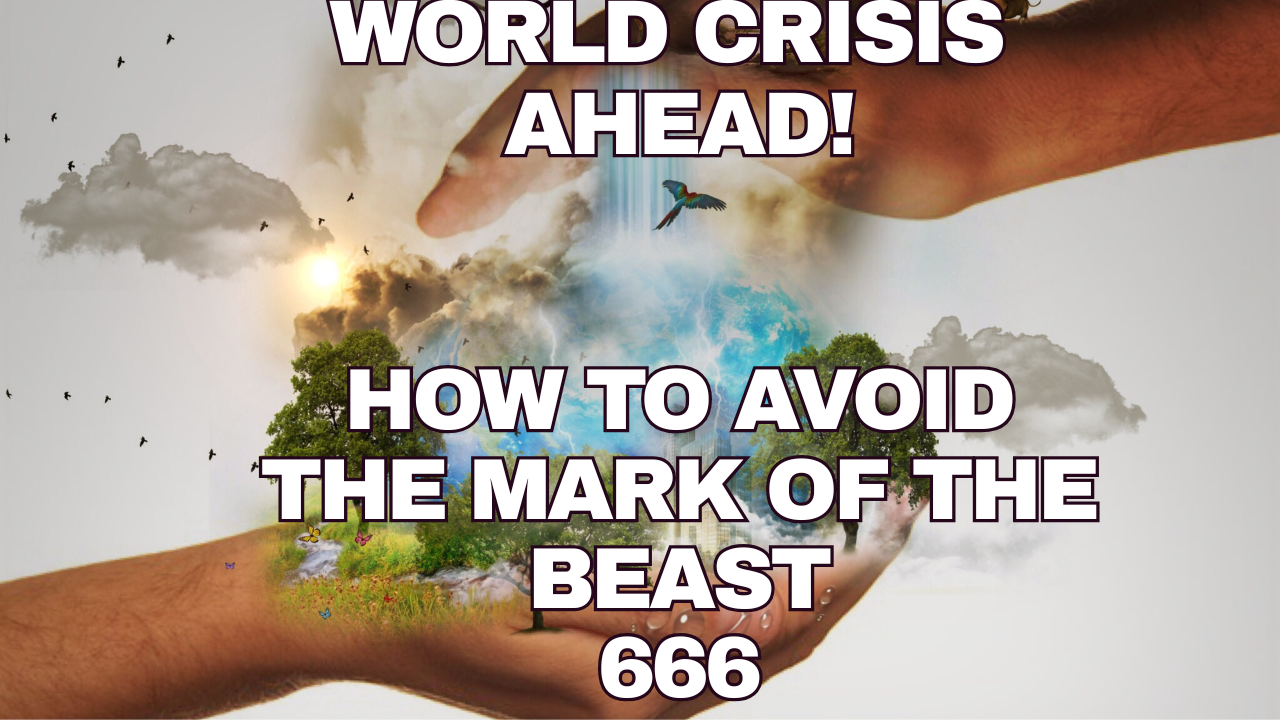

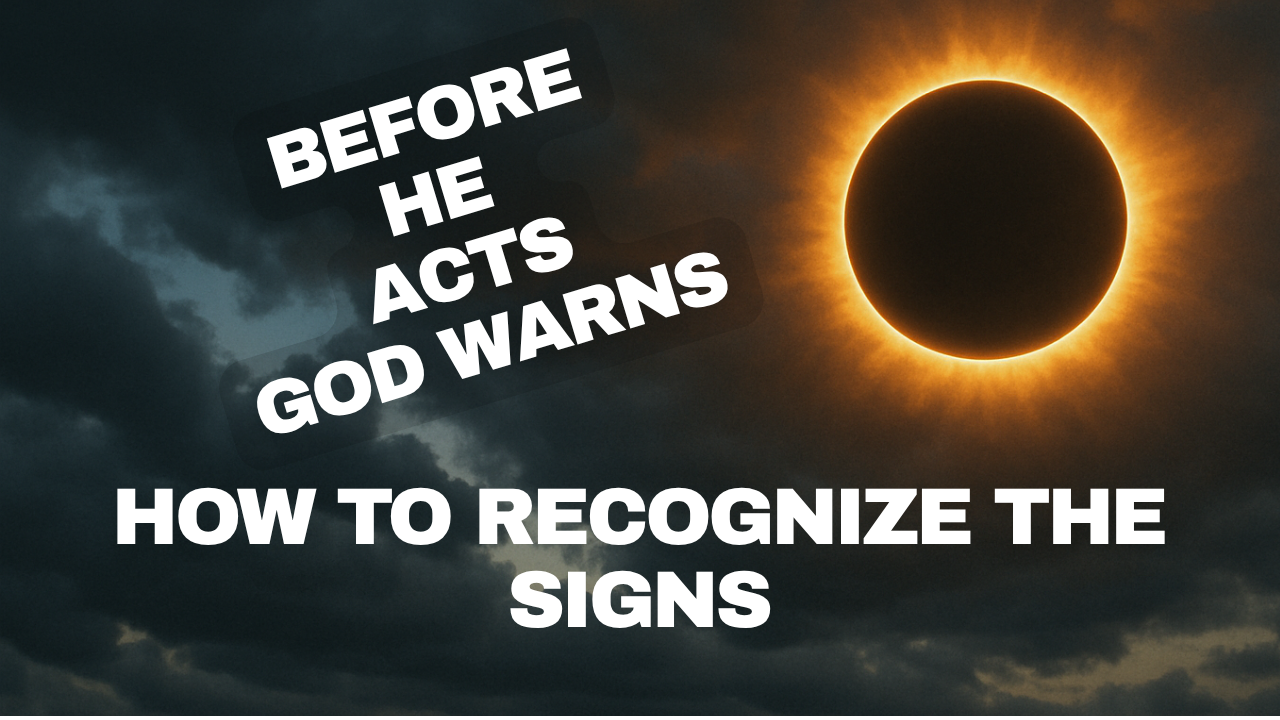
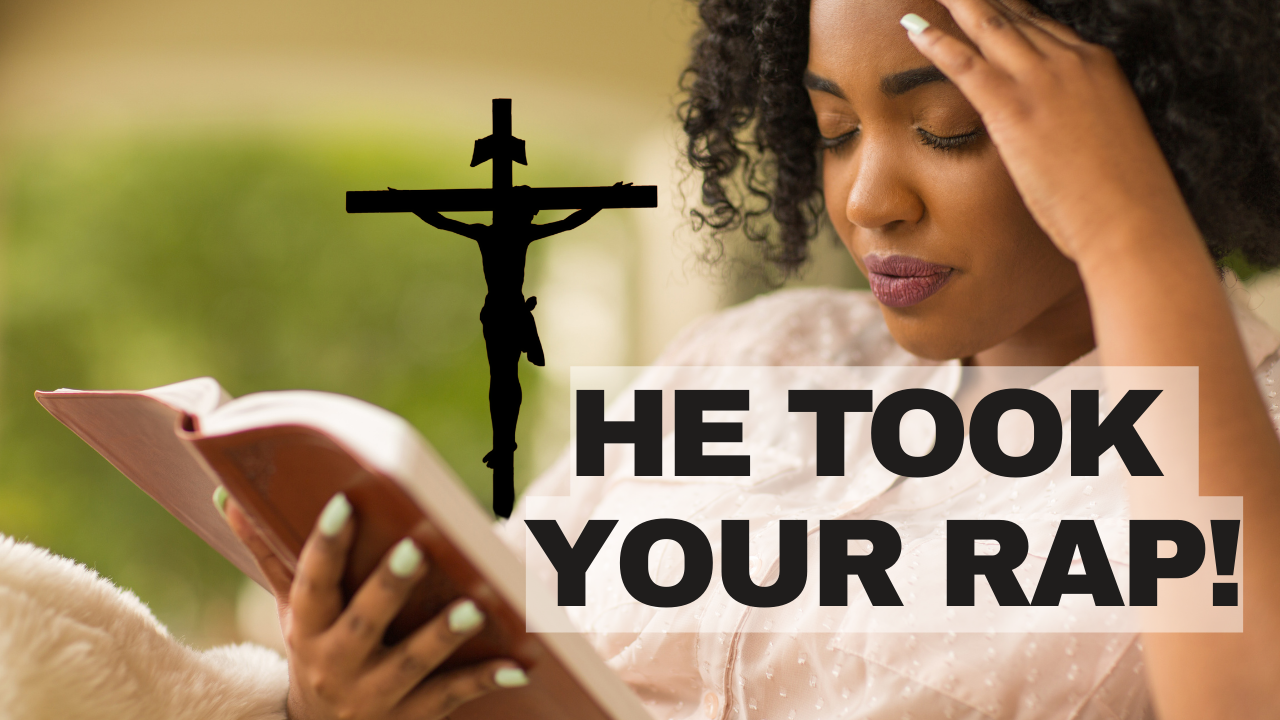

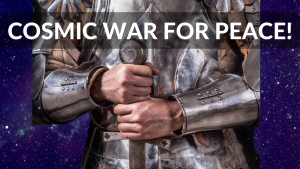

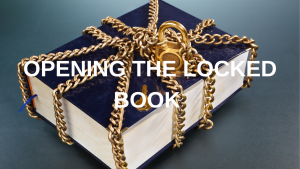
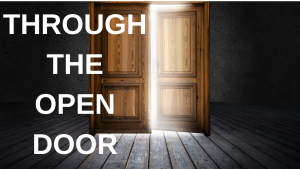





Post Comment